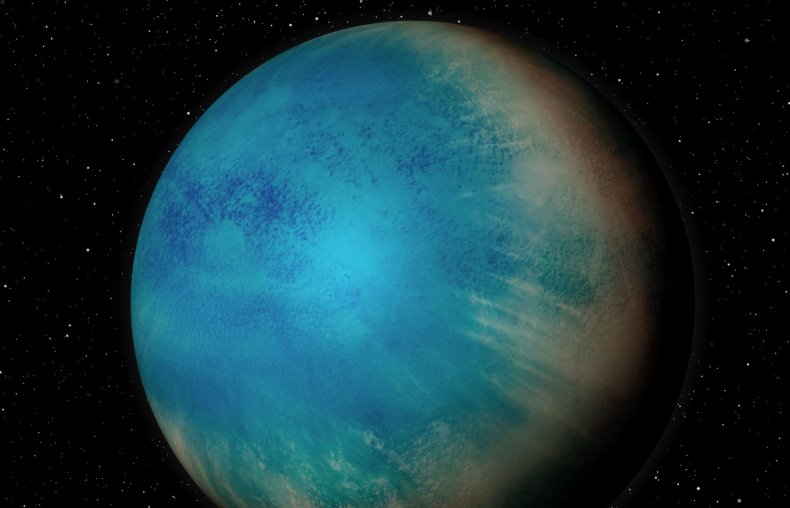Astronomers have discovered a distant planet that they think could be completely covered in water, making it a prime target for future study by the James Webb Space Telescope.
The planet is called TOI-1452 b and it is located around 100 light years away from Earth, orbiting one of a pair of stars in the Draco constellation.
Planets that orbit stars outside of the solar system are known as exoplanets, and it is a relatively new area of research. The first exoplanet was discovered as recently as 1992.
Since then, exoplanet discovery has become almost routine with NASA saying that more than 5,000 had been confirmed in March this year.

This sounds like a lot, but it would be a stretch to say that it even scratches the surface. Based on data from NASA's Kepler Space Telescope, it is estimated that there are more than a trillion planets in our galaxy alone. Statistically, many of them will be in Earth's size range and may be within the habitable zone of their star—close enough to be sufficiently warm for life and liquid water but not so close as to make the planet unsuitably hot.
The search for life is an interesting aspect of exoplanet research. To date, scientists have yet to find evidence of extra-terrestrial life on other worlds or even any planets that they know are likely to host it. But there are some exciting candidates.
In a study published in The Astronomical Journal on August 12, dozens of researchers from institutions around the world confirmed the existence of TOI-1452 b using the Transiting Exoplaney Survey Satellite (TESS) as well as the Observatoire du Mont-Mégantic in Canada and the MuSCAT3 telescope in Hawaii.
The planet is thought to be around 70 percent larger than Earth and nearly five times heavier. It orbits its star once every 11 days or so, and is thought to be temperate. It also orbits in a binary star system, in which two stars orbit one another at a distance roughly two-and-a-half times that from our own sun to Pluto.
What is interesting about the TOI-1452 b is that evidence suggests it might be an ocean world. In fact, it is one of the best candidates for such a planet ever to be found, according to Charles Cadieux, a Ph.D. student at the Université de Montréal who led the international team of researchers to study the planet.
"Its radius and mass suggest a much lower density than what one would expect for a planet that is basically made up of metal and rock, like Earth," Cadieux said in a university press release.
Analysis has suggested that water might make up as much as 30 percent of the planet's mass—a proportion similar to some solar system moons like Titan or Ganymede.
To find out for sure whether TOI-1452 b is watery, scientists will need to peer at it by using the powerful James Webb Space Telescope. Fortunately, the planet is a perfect candidate for observation—close enough to Earth to be easily seen and located in a part of the sky that the telescope can view year-round. Researchers are aiming to book time on Webb to probe TOI-1452 b as soon as they can.
Scientists can probe outer worlds using telescopes through many methods, but one that's often used is called transit photometry (sometimes referred to as the transit method). In transit photometry, scientists peer at the light given off by a star to see if it regularly dips. If so, it suggests that a planet is regularly passing in between the star and the observer.
This method also provides clues as to the planet's mass and its orbital period.
https://www.newsweek.com/exoplanet-alien-life-toi-1452-b-astronomy-james-webb-1736578
2022-08-24 15:51:00Z
CAIiEDNhPlMrlPk2yeVU74Rudn0qGQgEKhAIACoHCAow77zbCjDiq8wBMKiCsgU
Bagikan Berita Ini















0 Response to "Planet That May Be Covered With Water Discovered 100 Light Years Away - Newsweek"
Post a Comment